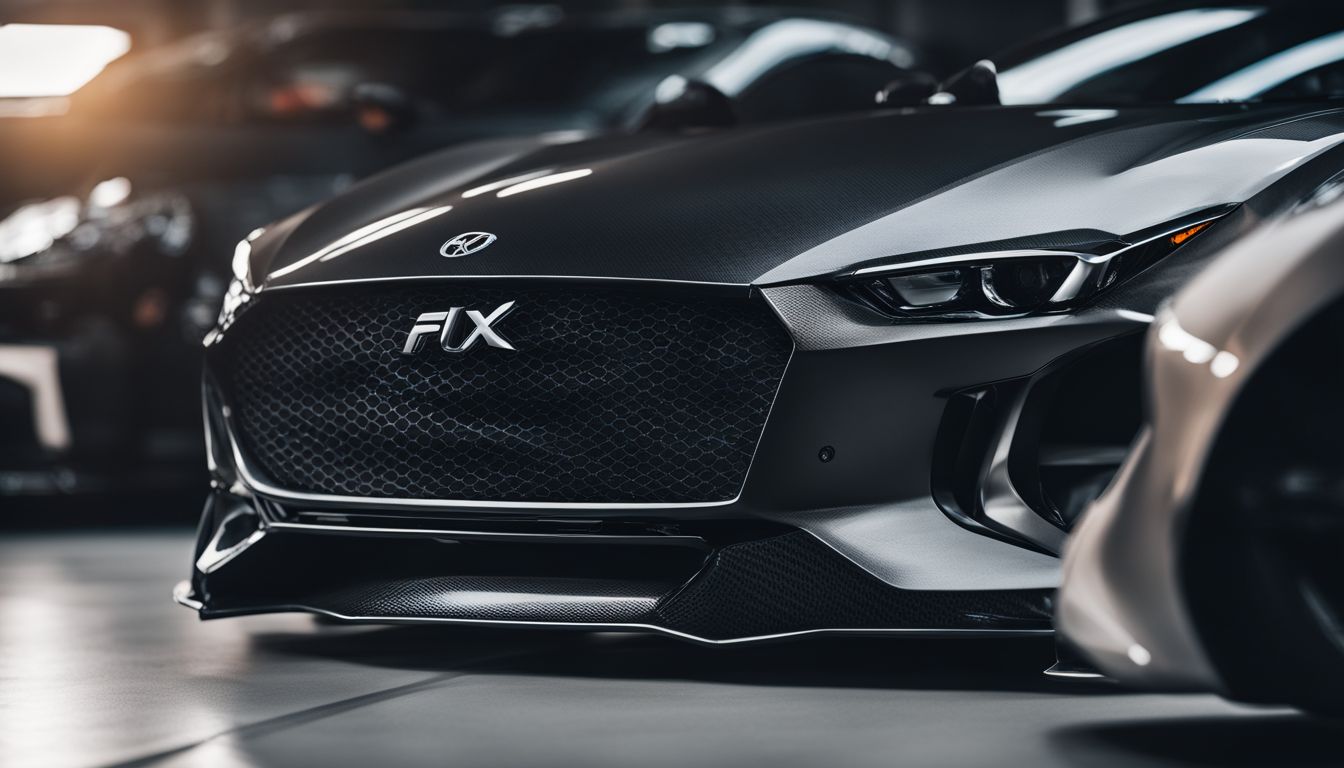
Carbon Fiber Trunk And Hood For Weight Savings
Reducing vehicle weight for enhanced performance and fuel efficiency is a common goal among car enthusiasts. A carbon fiber hood can be up to 29lbs lighter than its stock counterpart.
This article will explore how replacing your car's trunk and hood with carbon fiber parts can lead to significant weight savings. Let's dive in and discover the benefits.
Carbon Fiber for Weight Reduction
Carbon fiber is a high-performance material known for its strength and lightweight properties, making it ideal for weight reduction in automotive applications. By replacing traditional metal components with carbon fiber parts, vehicles can achieve improved handling, fuel efficiency, and overall performance.
Benefits of Carbon Fiber
Carbon fiber stands out as a top choice for weight reduction in automotive parts, including trunks and hoods. This material is significantly lighter than traditional steel or aluminum used in car manufacturing, offering a substantial decrease in overall vehicle weight.
For instance, replacing stock parts with a carbon fiber trunk or hood can lead to savings of up to 29 pounds for the hood and between 12 and 18 pounds for the trunk lid. Such reductions enhance the vehicle's performance by improving acceleration, braking efficiency, and fuel economy.
Moreover, opting for carbon fiber components like lightweight trunks and hoods doesn't only contribute to a sleeker design; it also plays a crucial role in boosting automotive aerodynamics.
Improved air flow around the car reduces drag, allowing for better speed and handling characteristics—a key factor in both high-performance sports cars and everyday vehicles aimed at maximizing efficiency.
The use of composite material technology further ensures that these benefits come without sacrificing strength or durability, making carbon fiber an ideal choice for those looking to upgrade their vehicle's functionality and appearance.
Commonly Replaced Parts
Upgrading to carbon fiber parts offers significant weight savings for vehicles, especially when replacing heavy stock components. The hood and trunk are among the most commonly swapped parts due to their large surface areas and considerable weight.
An OEM style carbon fiber hood can be up to 29lbs lighter than its stock counterpart, while a carbon fiber trunk with duckbill might weigh between 12lbs and 18lbs less than traditional materials like steel or aluminum.
These replacements not only enhance performance but also improve fuel efficiency by reducing overall vehicle weight.
Enthusiasts often choose these lightweight upgrades for both aesthetic appeal and performance benefits. Replacing the hood and trunk with real carbon fiber components is a popular choice for those looking to shed pounds off their ride without compromising strength or durability.
This shift towards high-performance car parts like aftermarket carbon fiber trunks and hoods reflects a growing trend in automotive customization focused on achieving the best in vehicle dynamics and aerodynamics.
Next, we delve into how such weight savings can be quantified, examining the average reductions achieved through these swaps.
Weight Savings with Carbon Fiber Trunk and Hood

Carbon fiber trunks and hoods offer significant weight savings compared to traditional metal counterparts. They can reduce vehicle weight by an average of 20-50%, enhancing fuel efficiency and overall performance.
Average Weight Savings for Each Part
Exploring the potential for weight reduction in vehicles, replacing stock parts with carbon fiber variants presents an intriguing opportunity for enthusiasts and professionals alike. The focus here is on the trunk and hood, where the transition to carbon fiber can yield significant savings.
| Part | Stock Weight (lbs) | Carbon Fiber Weight (lbs) | Average Weight Savings (lbs) |
|---|---|---|---|
| Hood | 24 (Aluminum) | ≤ 15 | Up to 29 |
| Trunk Lid | 33 (Steel) | 15 - 21 | 12 - 18 |
These figures underline the substantial weight reduction that can be achieved by integrating carbon fiber components. While the savings for each part may vary due to factors such as vehicle model and the specific carbon fiber component's design, the advantages of lighter weight are clear. Transitioning to the next topic, it's crucial to delve into the factors that influence these weight savings, providing deeper insights into the process and its outcomes.
Factors that Affect Weight Savings
The weight savings achieved with carbon fiber trunk and hood components can be influenced by various factors. The design and construction of the parts, as well as the type and quality of the carbon fiber used, are crucial determinants.
Additionally, paint finishes or special coatings can add to the overall weight, affecting the intended weight reduction. Furthermore, the installation process and any additional supports or reinforcements needed also impact the final weight savings.
When considering carbon fiber trunk and hood options for weight reduction, it is important to carefully evaluate these factors in order to make an informed decision that aligns with specific performance goals and budget considerations.
Cost and Considerations
Considering the cost and factors when choosing carbon fiber trunk and hood is crucial. It's important to compare prices and take other aspects into account before making a decision.
Price Comparison
Understanding the financial aspect of upgrading to carbon fiber trunk and hood components is critical for making an informed decision. The price of these components varies widely, influenced by factors such as brand, quality, and vehicle model. Below is a comparison that outlines the typical costs associated with carbon fiber replacements versus their standard aluminum and steel counterparts.
| Part | Material | Average Cost |
|---|---|---|
| Hood | Carbon Fiber | $600 - $2,500 |
| Hood | Aluminum | $300 - $800 |
| Trunk | Carbon Fiber | $500 - $2,200 |
| Trunk | Steel | $250 - $700 |
This table showcases the significant price difference between carbon fiber components and their aluminum or steel equivalents. While carbon fiber parts are lighter, offering a weight reduction that could be crucial for performance enthusiasts, they come at a considerable premium. For instance, a carbon fiber hood can cost upwards of $600, with some models reaching up to $2,500, reflecting a substantial investment over the more conventional aluminum hood. Similarly, carbon fiber trunk components command a higher price, starting at around $500 and can go up to $2,200.
It's important to weigh these costs against the expected benefits, such as weight savings and the visual appeal that carbon fiber adds to a vehicle. While a carbon fiber hood can be up to 29lbs lighter than a stock hood, and trunk lids can offer a weight saving between 12lbs and 18lbs, these advantages must be balanced against the financial outlay required. Given the significant expenditure, potential buyers should consider both their budget and performance goals carefully before making a decision.
Other Factors to Consider
When considering carbon fiber components for weight savings, it's essential to account for the cost of installation and potential modifications. Additionally, assessing the impact on vehicle balance and handling is crucial.
Moreover, determine if the weight savings justify the expense effectively in terms of performance improvements.
Another factor to consider is the material quality and construction of carbon fiber parts. Ensure that the components meet safety standards and have undergone rigorous testing to guarantee durability, especially when used in high-performance or racing vehicles.
Also, take into account any warranty or maintenance considerations associated with these lightweight parts to make an informed decision.
Conclusion and Recommendations
Upgrade your vehicle's performance and aesthetics with carbon fiber trunk and hood components. Enjoy significant weight savings, improving fuel efficiency and handling while giving your car a sleek, modern look.
Factor in the cost-benefit ratio carefully to make an informed decision about these lightweight, high-performance upgrades. Consider options like OEM style carbon fiber parts to achieve both function and form without compromising quality or safety.
FAQs
1. What are the benefits of using carbon fiber trunk and hood for weight savings?
Using carbon fiber trunk and hood can significantly reduce the overall weight of the vehicle, leading to improved performance and fuel efficiency.
2. Will installing a carbon fiber trunk and hood affect the durability of my vehicle?
No, when installed correctly, a carbon fiber trunk and hood can maintain or even enhance the structural integrity and durability of your vehicle.
3. Can I install a carbon fiber trunk and hood myself?
Yes, it is possible to install a carbon fiber trunk and hood with basic automotive knowledge; however, professional installation is recommended for optimal results.
4. How much weight can I expect to save by replacing my standard trunk and hood with carbon fiber ones?
Replacing standard components with carbon fiber alternatives can typically result in saving around 25-50% of weight, depending on the specific parts used.
5. Are there any downsides to using carbon fiber trunk and hood for weight savings?
One potential downside is that these components may come at a higher initial cost compared to traditional materials; however, they offer long-term benefits in terms of performance improvement.



